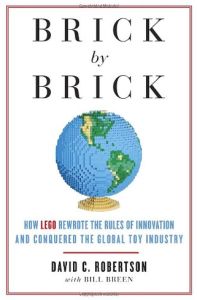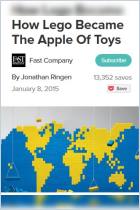Join getAbstract to access the summary!

Join getAbstract to access the summary!
David C. Robertson and Bill Breen
Brick by Brick
How LEGO Rewrote the Rules of Innovation and Conquered the Global Toy Industry
Crown, 2013
What's inside?
LEGO Group became a toy colossus by balancing innovation and discipline.
Recommendation
Books on innovation strategy tend to focus on how to free the creative spirit. But as the history of the LEGO Group shows, imposing discipline and limits on your company’s innovation culture is equally important. Faced with a changing toy market in the 1990s, Lego responded with a decade of unbridled creativity, tripling its new toy offerings and moving into all possible markets. The result was a near disaster. In 2004, a new management team demonstrated that successful innovation alone is not enough. You must balance freedom with discipline, pacing and practicality. In this entertaining, detailed account, Wharton School professor David C. Robertson, writing with former Fast Company editor Bill Breen, shows how Lego’s management mishandled seven best practices of modern innovation and how the company subsequently modified these tenets to fit Lego’s unique culture. getAbstract recommends this trip to the business side of toy land to senior managers, product designers and developers, marketers, entrepreneurs, and anyone who still has a bucket of Legos in the closet (sure, they’re for the kids…).
Summary
About the Authors
David C. Robertson teaches at the Wharton School. He previously taught innovation and technology management and was Lego professor at the IMD business school in Lausanne, Switzerland. Bill Breen is a former senior editor at Fast Company magazine.

















Comment on this summary